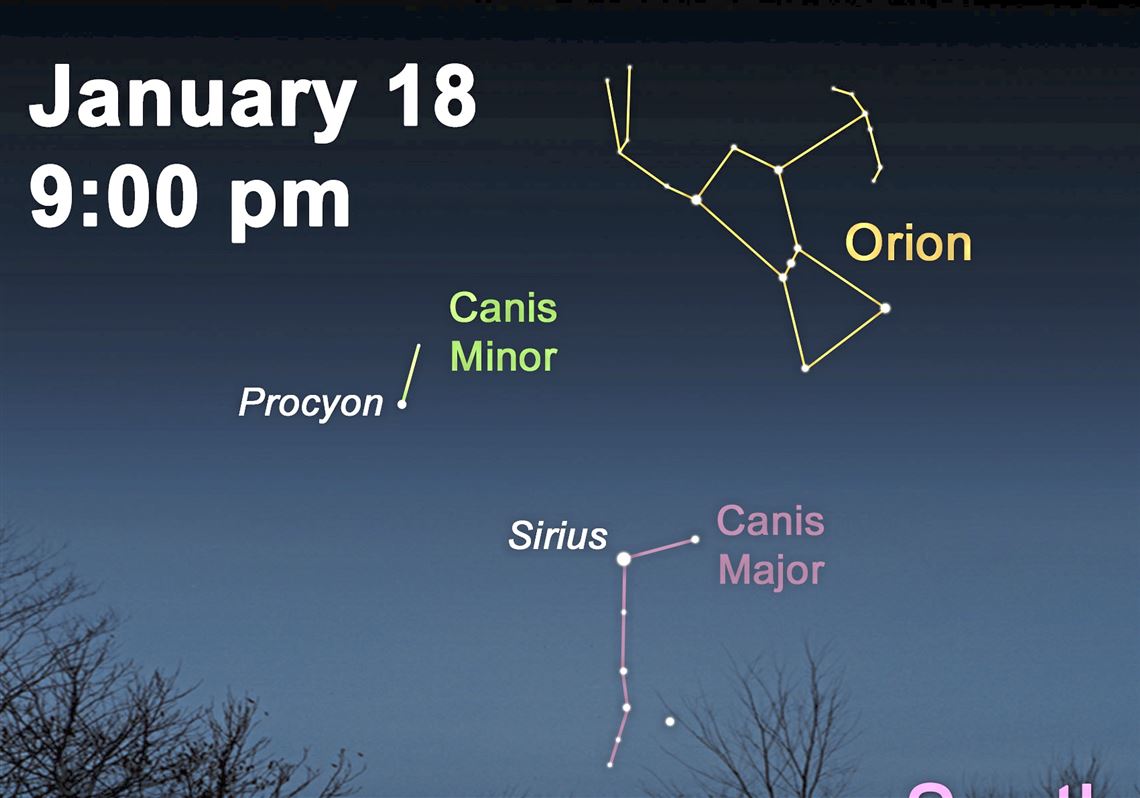The faithful canine followers of Orion the Hunter have their own dazzling beauty, in particular the exceptional brilliance of the star Sirius. Sirius is the brightest star in the constellation Canis Major, and the brightest star in the night sky.
Ptolemy listed it as “The Dog” in his catalog of 48 constellations and the ancients called it “the dog with the blazing face.” In summer, the Greeks noted the “dog star” rising and setting with the sun. The hottest days of July and August were associated with Sirius. This sweltering time became known as the dog days of summer, a phrase we still use today.
In Egypt, Sirius’ arrival signaled the seasonal floods and the pharaoh’s calendar began with the star’s appearance. In Greek mythology, Canis Major represents the swift dog, Laelaps. So fleet of foot that no prey could outrun it, the dog met its match hunting a fox so fast it could never be caught. The inescapable dog pursuing the uncatchable fox proved a paradox too much for Zeus: The animals were turned to stone, and the big dog went to the sky.
Canis Minor, “The Little Dog,” contains the glittering star Procyon, the eighth brightest star in the sky. Its Latin translation is, “before the dog,” as Procyon precedes Sirius’ rising by about 20 minutes. Only one other star, Gomeisa, completes the constellation. Together with Betelgeuse, Procyon and Sirius form the “Winter Triangle.”
First Published: January 18, 2022, 11:00 a.m.

















